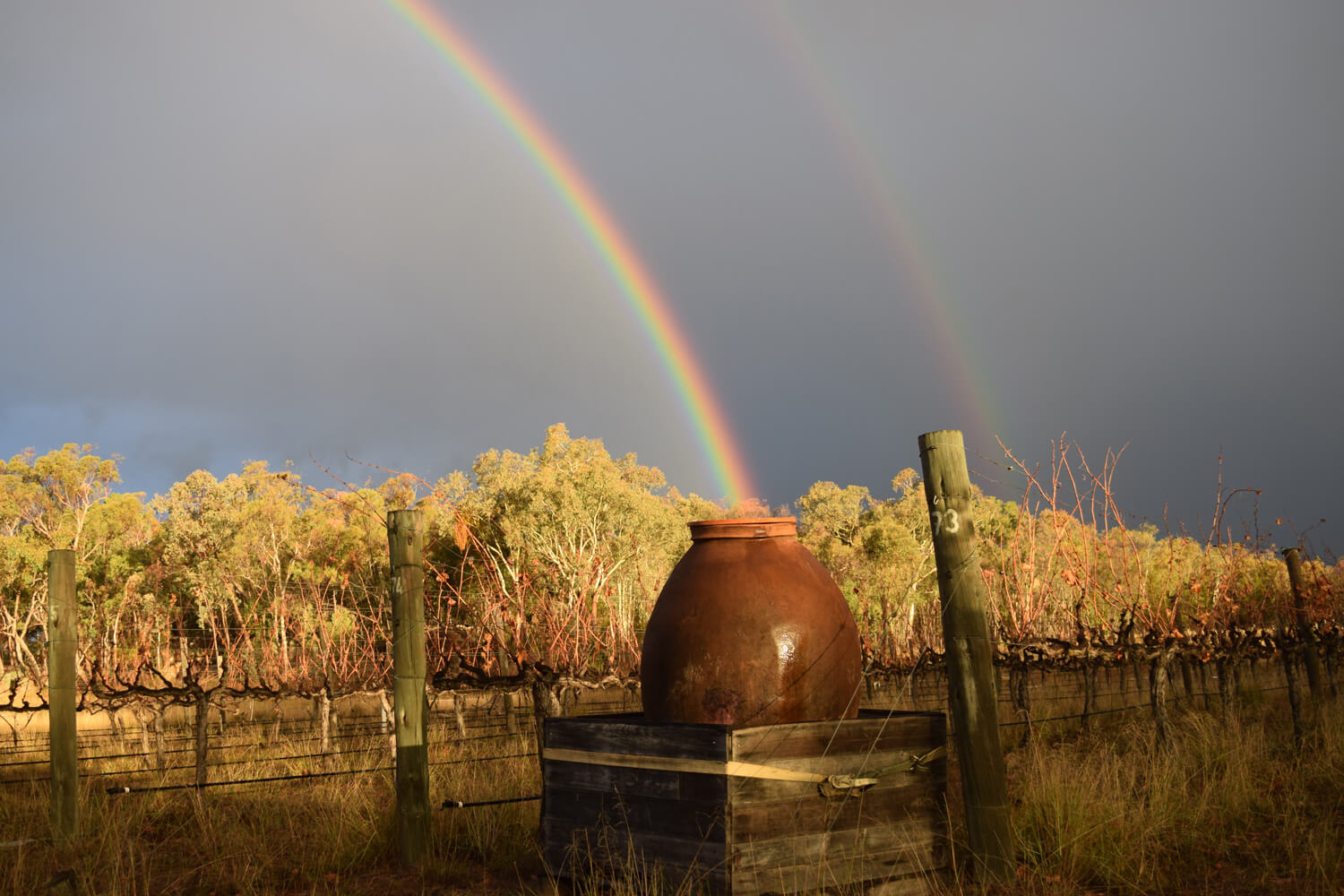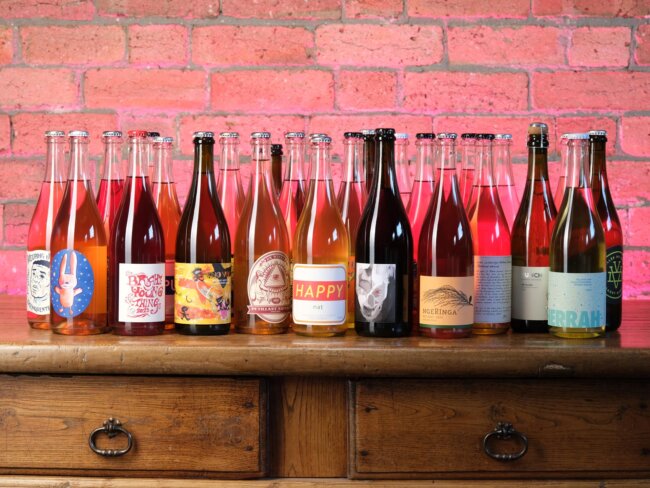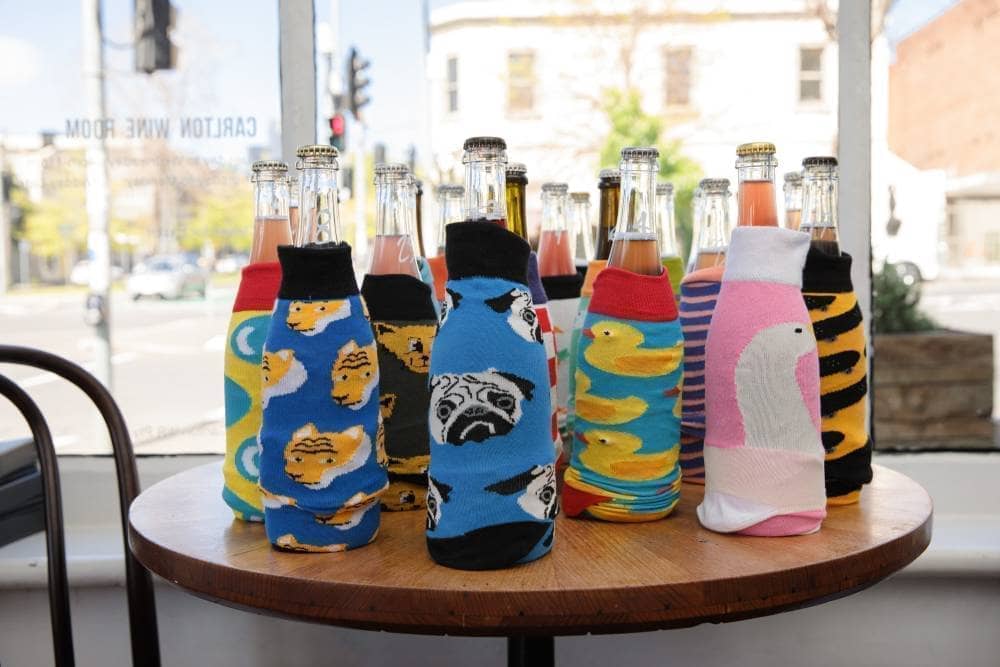The Sunshine State is probably not high on the list when one thinks of cool climate wine regions, but Queensland’s Granite Belt is just that. In fact, it is Queensland’s coldest place, and by some margin. It nestles down on the south-eastern border, but the climate is driven by elevation rather than latitude, marking it as overtly different to the rest of the state. As the Wine & Tourism body says, “It’s part of Queensland, but it’s a different country.” La Petite Mort’s Andrew Scott is a two-time Young Gun finalist and the sole Granite Belt maker in this year’s Top 50.
The Granite Belt is essentially a mammoth 200-million-year-old granite deposit in Queensland’s south-east, with Stanthorpe as its main town. It is the northern extension of the New England Tablelands, in New South Wales. Aside from granite, the defining feature of the region is the altitude, which defines the climate.
Cool climate in the sunny state
Wine Australia lists the elevation as between 604–1,298 metres above sea level, with the average altitude of vineyards about 800 metres. That’s very high for wine grapes, with those figures similar to those of Orange, NSW, which is one of Australia’s coldest wine regions. That elevation is a big driver for cool conditions, and for seasonality, an important factor for cool climate wine production, allowing grapes to ripen more slowly as summer fades towards autumn.
“High altitude, cool climate, and, well, there’s lots of granite!” says Scott.
Though classed as subtropical, the climate is distinctly quartered into seasons, with snow sometimes falling. Subzero winter nights, frosts and leaves blazing in autumn displays are all part of the picture. That autumn show is even more apparent in the region given the proliferation of the crops that have traditionally thrived in the Granite Belt.
![]()
Winter morning frost on vines at Bent Road Wines in Queensland’s Granite Belt.
Along with viticulture, vegetable crops and orchards flourish, with apples, pears and stone fruit ideally suited to the region’s climate and fertile soils. Essentially, all the apples grown in Queensland come from the Granite Belt. There’s even a big apple in Thulimbah – not your standard oversized tropical tribute. The history of agriculture stretches well back into the 19th century with Ballandean Run – a pastoral station – established in 1840. The town of Ballandean also leant its name to one of the first wineries.
Close to 100 years of winemaking history
Ballandean Estate was founded in 1932 by the Puglisi family – now into its fifth generation there – making it Queensland’s oldest family owned and operated winery. That sense of history is further enhanced by looming 150-year-old barrels that are used to age fortified wines, though those barrels are old German beer casks that were installed in 1971.
Blazing onto the scene in the 1990s, Terry Morris’ eponymous (in reverse…) winery is probably the Granite Belt’s most recognised. It is also the most awarded, groaning under the weight of wine show accolades. Sirromet was actually founded to prove a point to southern friends who believed that no good wine could emerge from Queensland. Point made.
Today, the Granite Belt has almost 250 hectares under vine and over 50 cellar doors, with Sirromet easily the most conspicuous – you can get married there, dine finely, embark on a multitude of wine experiences and even play a full round of golf.
![]()
Bent Road Wines’ vineyard: in Queensland’s Granite Belt, vines are planted amongst granite terrain, at altitude.
Blazing onto the scene in the 1990s, Terry Morris’ eponymous (in reverse…) winery is probably the Granite Belt’s most recognised. It is also the most awarded, groaning under the weight of wine show accolades. Sirromet was actually founded to prove a point to southern friends who believed that no good wine could emerge from Queensland. Point made.
Andrew Scott works as the assistant winemaker at Bent Road Wine – at about 1,000 metres elevation – on the estate’s main wines, as well as crafting his boundary pushing La Petite Mort label. Scott hails from Adelaide, making it perhaps a little odd that he ended up making wine in a Queensland wine region, but for him, it’s pretty special territory.
Scott works with several ‘alternative’ varieties, including making saperavi, one of Georgia’s most important grapes, fermented in traditional Georgian qvevri (terracotta amphora). Scott also has a passion for fortified wines, and in particular Maderia. “As it happens,” he says, “the Granite Belt is a region that (for better or for worse) is a hotspot for the Madeira variety of verdelho. So, I’m making some of that too.”
“High altitude, cool climate, and, well, there’s lots of granite!” says Scott. “It bears some resemblance to the area of granitic soils that extends from the south of Burgundy into the northern Rhône Valley, and the grapes from that part of the world seem to do well here.”
The Bent Road vineyard was established in 2000 by Glen Robert, and its main varieties are marsanne, semillon, verdelho, shiraz and tempranillo, along with a small amount of cabernet sauvignon. Scott advises, “New plantings of nebbiolo are coming online in a year or two, hopefully.”
Grape supply
Following the national trend, shiraz is the most planted grape in the region, but it is not as dominant as it is in many zones. Interestingly, given the cool climate, Bordeaux varieties are well represented, as is chardonnay, with meaningful presences of riesling, pinot gris and sauvignon blanc. Outside of the familiar, though, the Granite Belt has directed the spotlight on ‘alternative’ varieties, celebrating them with their “Strange Bird” wine trail, with some 30 wineries featured.
Not all varieties may be that unfamiliar – such as chenin blanc, marsanne and mourvèdre – just planted in small concentrations, but there is also a wealth of less-common grapes, with saperavi, alvarinho (albariño), petit manseng, sylvaner, graciano, pinotage, tannat and sagrantino all meriting a mention on the route.
Scott works with several ‘alternative’ varieties, including making saperavi, one of Georgia’s most important grapes, fermented in traditional Georgian qvevri (terracotta amphora). Scott also has a passion for fortified wines, and in particular Maderia. “As it happens,” he says, “the Granite Belt is a region that (for better or for worse) is a hotspot for the Madeira variety of verdelho. So, I’m making some of that too.”
![]()
Terracotta amphora (or “qvevri”) at Bent Road Wines.
One of the issues with sourcing enough fruit is the conversion of some vineyards to other crops. “We would like to source more grapes locally, but they’re in short supply because it’s a challenge to grow grapes,” Scott says. “And the region has strong history in tomatoes, capsicums, etc. They’re easier to grow, and because growers make money more easily, vineyards are being replaced with those crops.” Scott supplements his production for La Petit Mort by sourcing grapes across the border in New England, as well as further afield.
Trailblazers
While the Granite Belt is singular in respect to its soils and climate, Scott believes that the excitement is in the hands of today’s makers. “Despite 100 years of grape growing and winemaking in the region, it has really been in the last decade that the Granite Belt has struck its stride with an influx of qualified winemakers and passionate growers, and a re-investment in technology and equipment.”
That sense of change has also been felt amongst the region’s veteran estates. Ray Costanzo (2017 YGOW Top 50) is a third-generation Granite Belt winemaker. He grew up on the family property, Golden Grove Estate, which was founded in 1946.
“The first 12 years at home I found myself chasing the very strict university trained, wine show directed winemaking,” Costanzo says. “I was able to achieve amazing results both local and nationally on the wine show circuit, which brought great exposure and sales to a small winery like ours. But I am much more relaxed now and make wine for myself. Wines that I like to drink, not show defined. I utilise natural yeast, whole-bunch and skin ferment (on whites) and love working with Mediterranean varieties.”
![]()
Andrew Scott, on the right, alongside Bent Road Wines’ owner, Glen Robert.
This kind of development coupled with the region’s low profile for many wine drinkers is something that Scott relishes. “Being in the literal frontier of Australian wine is not only a challenge, but it’s an opportunity,” he says. “It’s an opportunity to grow and develop and pioneer without being pigeonholed by tradition. In the Granite Belt, we don’t think outside the box because there is no box out here! I couldn’t imagine a better setting for the work we’re doing.”
The Wines
2019 La Petite Mort ‘Qvevri Gentil’
(Gewürztraminer from New England, muscat from Granite Belt, pinot gris from Hilltops.) Rusty hue. This has lifted notes of orange blossom water, tangelo, musk, mandarin peel, redcurrant, white strawberry and watermelon rind. There’s a real grapefruit pith thing going on here, too, both on the nose and as a pith-like burr of tannin on the palate from the skin contact. This is dry, with a raft of light texture suspended by a very fine mesh of tannin, chalky, pithy, pumice-like, with the orange blossom and mandarin/tangelo peel flavours kicking right through the back palate, with pleasing peel bitterness accenting.
2019 La Petite Mort ‘The Rosso’
(Nebbiolo and barbera sourced from Hilltops in NSW.) This has a savoury and leathery nose, with plum skin, panforte, allspice, cloves, some bitter herbs, marasca cherry, alpine mint and savoury dark fruits, with wild red fruit peeping up. Dry toned, leathery, but far from rustic. Oak doesn’t seem to be a factor here, not for flavour at least. It feels Italian, but not. A hint of dried red flowers, grippy tannins, with a note of dried orange peel playing through the back palate.
See the full list of Top 50 winemakers in the 2020 Young Gun of Wine Awards here. Join in our virtual events here, and also vote on who wins the People’s Choice until June 1.










